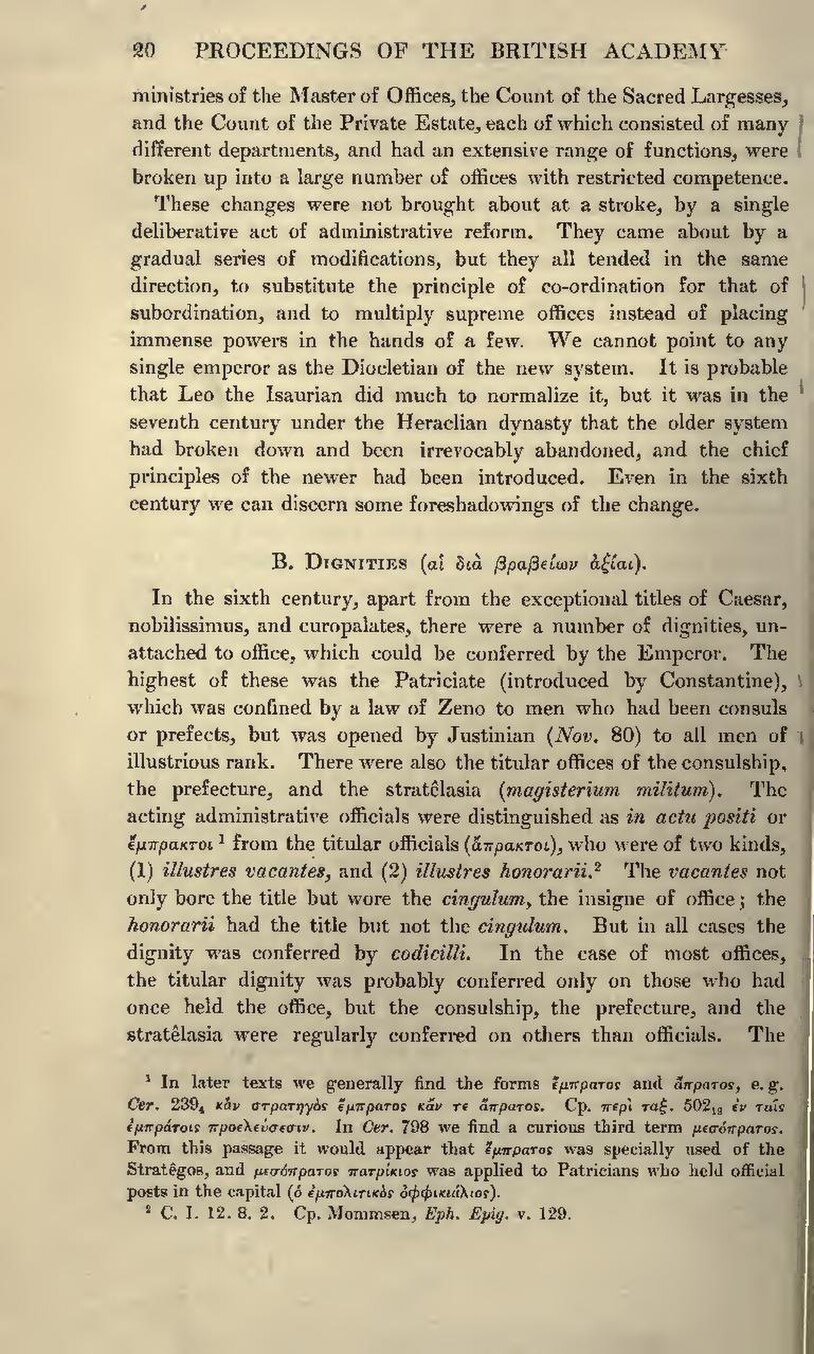ministries of the Master of Offices, the Count of the Sacred Largesses, and the Count of the Private Estate, each of which consisted of many different departments, and had an extensive range of functions, were broken up into a large number of offices with restricted competence.
These changes were not brought at a stroke, by a single deliberative act of administrative reform. They came about by a gradual series of modifications, but they all tended in the same direction, to substitute the principle of co-ordination for that of subordination, and to multiply supreme offices instead of placing immense powers in the hands of a few. We cannoy point to any single emperor as the Diocletian of the new system. It is probable that Leo the Isaurian did much to normalize it, but it was in the seventh century under the Heraclian dynasty that the older system had broken down and been irrevocably abandoned, and the chief principles of the newer had been introduced. Even in the sixth century we can discern some foreshawdowings of the change.
B. Dignities (αἱ διὰ βραβϵίων ἀξίαι).
In the sixth century, apart form the exceptional titles of Caesar, nobilissimus, and curopalates, there were a number of dignities unattached to office, which could be conferred by the Emperor. The highest of these was the Patriciate (introduced by Constantine), which was confined by a law of Zeno to men who had been consuls or prefects, but was opened by Justinian (Nov. 80) to all men of illustrious rank. There were also the titular offices of the consulship, the prefecture, and the stratêlasia (magisterium militum). The acting administrative officials were distinguised as in acta positi or ϵ῎μπρακτοι[1] from the titular officials (ἄπρακτοι), who were of two kinds, (1) illustres vacantes, and (2) illustres honorarii.[2] The vacantes not only bore the title but wore the cingulum, the insigne of office; the honorarii had the title but not the cingulum. But in all cases the dignity was conferred by codicilli. In the case of most offices, the titular dignity was probably conferred only on those who had once held the office, but the consulship, the prefecture, and the stratêlasia were regularly conferred on others than officials. The
- ↑ In later texts we generally find the forms ἔμπρατος and ἄπρατος, e.g.Cer. 2394, κἄν στρατηγὸς ἔμπρατος κἄν τε ἄπρατος. Cp. περὶ ταξ. 50219 ἐν ταῖς ἐμπράτοις προελεύσεσιν. In Cer. 798 we find a curious third term μϵσόπρατος. From this passage it would appear that ἔμπρατος was specially used of the Stratêgos, and the μεσόπρατος πατρίκιος was applied to Patricians who held official posts in the capital (ὁ ἐμπολιτικὸς ὀφφικιάλιος).
- ↑ C. I. 12. 8. 2. Cp. Mommsen, Eph. Epig. v. 129.
